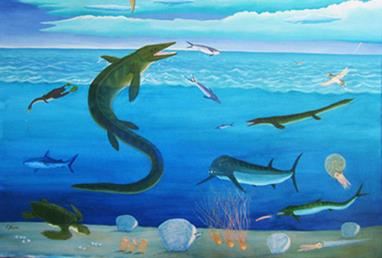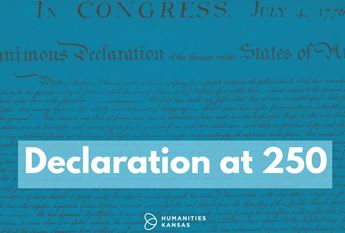

Can You Dig It?
To understand Stanton County’s water story and history, you need to start digging. Clues to this southwest Kansas county’s long and varied water story are found underground. Here you’ll find fossils of fish and whales, not dinosaurs. These sea animals lived during the Cretaceous Era, between 66 and 145 million years ago, in a body of water known as the Western Interior Sea. This sea stretched from today’s Gulf of Mexico all the way through northwest Canada to the Arctic Circle.
Around 9,000 years ago, after the ocean receded, the first humans appeared in what is now Stanton County.
An amazing variety of creatures lived in the Western Interior Sea, including the Mosasaur. Katie Herrick, director at the Stanton County Museum, refers to it as “the T-Rex of the sea.” An adult Mosasaur grew up to 17 meters in length and looked like an aerodynamic, elongated whale with a pointed, alligator-like mouth. Mosasaurs and other marine life, left their fossilized remains and archaeological digs regularly find ancient traces of a time when an ocean covered this part of Kansas.
Around 9,000 years ago, after the ocean receded, the first humans appeared in what is now Stanton County. During the same era, a chain of intermittent playa lakes – temporary lakes formed by rainwater filling natural hollows in the landscape –provided a place for bison to gather and drink and offered a tempting spot for Paleo-Indians to hunt. In 2002, Jack Hofman, archaeologist at the University of Kansas, discovered dozens of bison bones, including fully articulated skeletons, on a dig at the Bear Creek playa bed. The team also found two small stones—a tiny edge of a lithic arrowead, and an entire arrowhead point. This helped provide evidence that Paleo-Indians met at Bear Creek playa and used it as a bison kill site.
Keep digging in Stanton County today—you might need to go down pretty deep—and you’ll hit the Ogallala aquifer, proof that Stanton County’s water story is ongoing.
Mural by Chuck Bonner, Keystone Gallery, Scott City, Kansas



